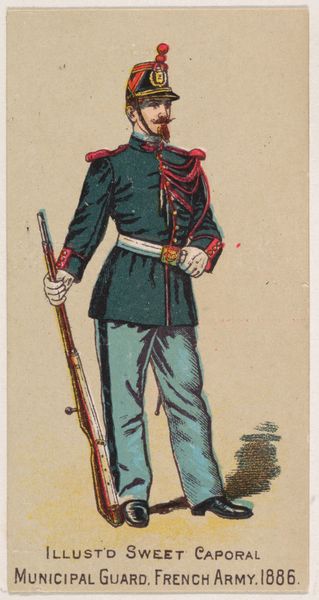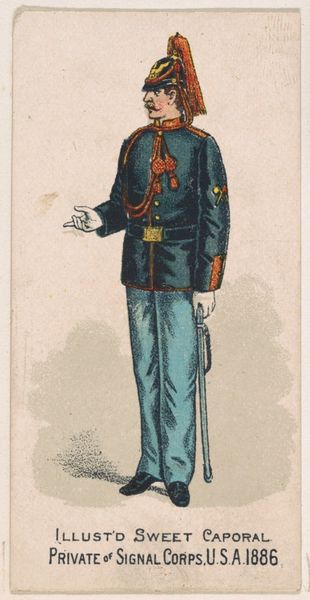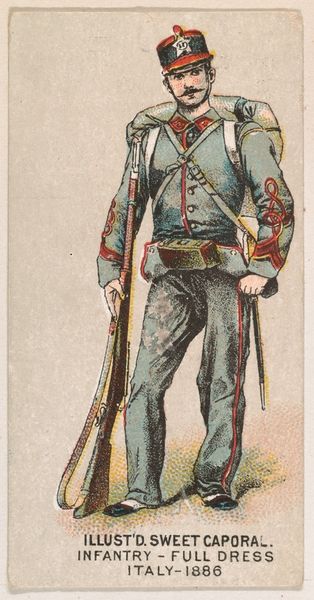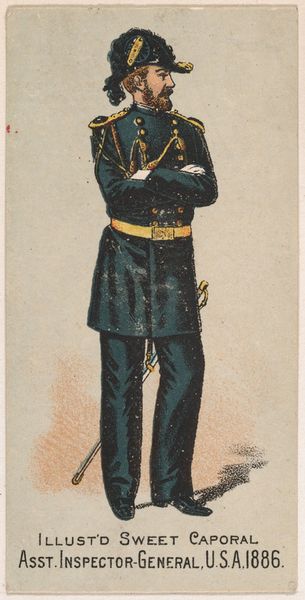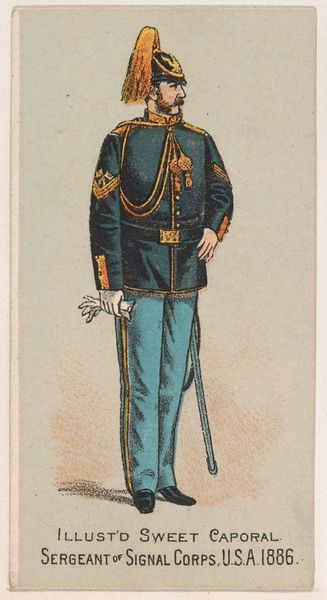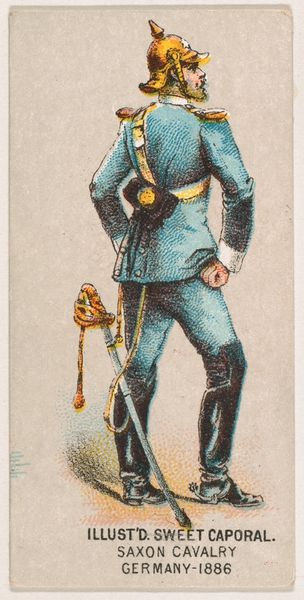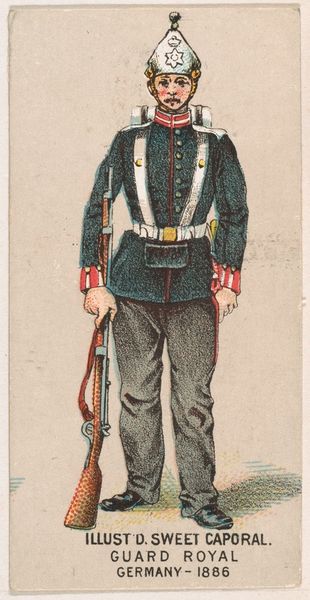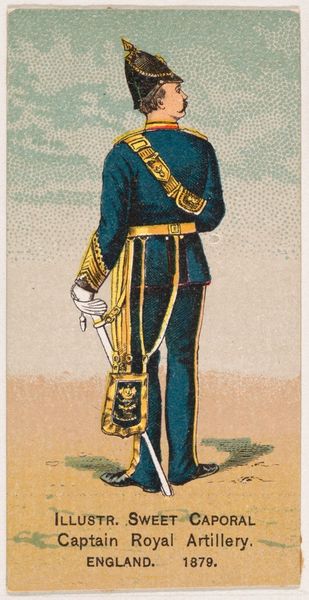
Gendarme, French Army, 1886, from the Military Series (N224) issued by Kinney Tobacco Company to promote Sweet Caporal Cigarettes 1888
0:00
0:00
drawing, print
#
portrait
#
drawing
# print
#
impressionism
#
caricature
#
caricature
#
soldier
Dimensions: Sheet: 2 3/4 × 1 1/2 in. (7 × 3.8 cm)
Copyright: Public Domain
Curator: This is an advertisement card from the Kinney Tobacco Company, dating back to 1888. It is part of their "Military Series" and depicts a "Gendarme, French Army, 1886." These were promotional inserts for Sweet Caporal Cigarettes. Editor: Well, my initial reaction is… quite stylized. There’s a certain theatricality in the rendering, an exaggeration in the posture and uniform that suggests a performance. It's not necessarily naturalistic. Curator: Indeed. Think about how military imagery was utilized and consumed in the late 19th century. These cards were mass-produced; miniature portraits intended to romanticize the army. They fostered a certain sense of national pride and perhaps contributed to the normalization of military service. Editor: Precisely, that's what I find interesting! This seemingly innocuous card acts as a vector of ideology. The soldier, though generic in appearance, becomes a symbol. And let's consider how the soldier is not rendered neutrally. It veers almost into caricature, raising questions about the underlying societal attitudes towards military personnel, or perhaps French militarism. Curator: That hint of caricature, I believe, is less about ridiculing the soldier and more about emphasizing recognizable “types”. There's a performative aspect of national identity at play, packaging France itself into a commodity. Also note the company—a tobacco brand co-opting a symbol of French power! The convergence reveals the interwoven relationships between military strength, cultural identity, and capitalism. Editor: And the potential power dynamics. Were these images targeting specifically male audiences, implicitly or explicitly? The normalization of smoking habits could, in turn, have further social consequences connected to class and gender at that time. It's important that the artwork is not detached from its social ramifications. Curator: Absolutely. Furthermore, Kinney Tobacco wasn’t simply an art patron. They benefited financially. We must remember such companies heavily influenced and steered aesthetic and political representation of not only the subject of French gendarmes, but France itself! Editor: Thinking about its original context, the mass circulation is critical. A cigarette card becomes a potent instrument shaping national and social attitudes, intertwining concepts of national pride, military personnel, and commodification of masculinity. Curator: Studying "Gendarme, French Army, 1886", reminds us of the political narratives inherently enmeshed within popular art. The piece asks that we consider the mechanisms and intent that are central to this representation. Editor: I'd concur! It underscores how critical reflection, even of the smallest pieces, reveals powerful insight in the social construction of identity, nationhood, and commodity culture.
Comments
No comments
Be the first to comment and join the conversation on the ultimate creative platform.

